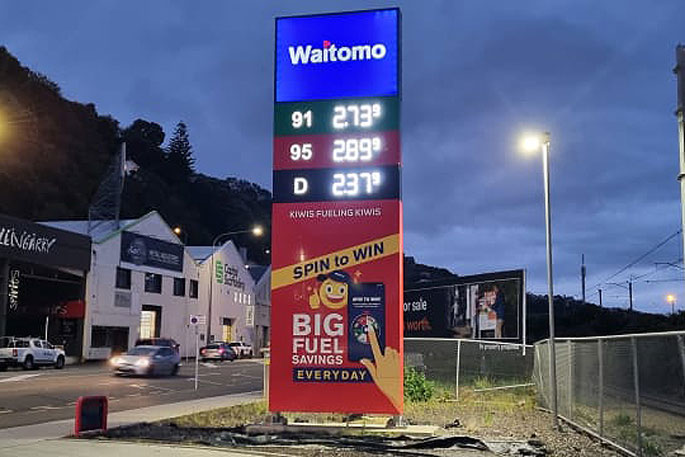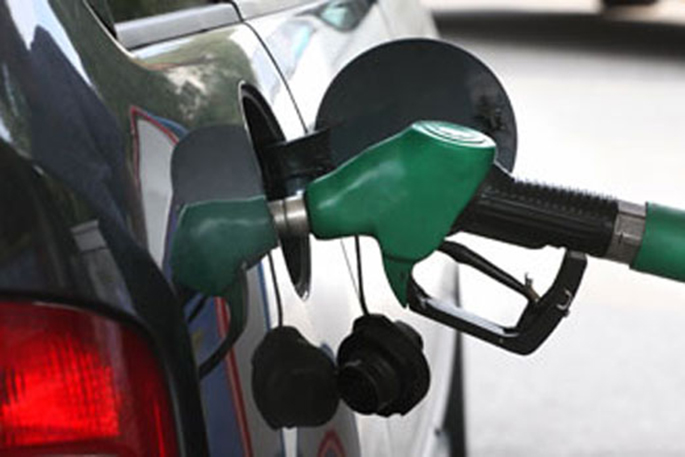The Commerce Commission cannot do much more than ask the fuel industry to explain why some towns and cities are paying much higher retail prices than others.
The commission is asking major fuel companies to explain why retailers in some places are charging a lot more for what is essentially the same product.
In Auckland there was 52 cents between the cheapest and most expensive regular 91, the commission says in its latest report into fuel pricing.
Chairperson John Small says there's no clear underlying factors to explain the pricing variations.
"There's a map - I'm just looking at it right now - it's kind of a heat map showing Auckland and where the cheap and expensive petrol is, and it's very clustered," he told Checkpoint on Wednesday.
"There's a big sort of cheap area in the south, around Mangere, and out west is reasonably cheap. Very expensive centrally, getting more expensive up to the North Shore.
"We're just really keen to understand how they do set these prices because we can't explain it in terms of distance or trucking costs or land costs."
The closest correlation he can think of is how wealthy each region is perceived to be - which is not illegal.
"But you know, we've run out of guesses to be honest, so we're just going to ask them."
He says the commission can take action against anti-competitive behaviour, but it would not be feasible to impose regulated pricing, regardless of any concerning variations in price, and it does not have that kind of power in the retail market anyway.
"Directly regulating and controlling the price of petrol at every station doesn't seem to be a realistic thing to be wanting to do, so we're trying to pressurise people in other ways."
The report also shows motorists in Whangārei, in particular, are paying more for fuel than the other cities studied, despite being near Marsden Point.
"Its prices were very much in line with other cities up until the middle of last year," says Small.
"Since then it's been sitting comfortably above all of the other cities we monitor, so something happened in the middle of last year to create that gap, and I'm pretty keen to understand what it was."
Wholesale prices have been dropping, Small saying not all of that is being reflected in prices at the pump - with retailers' margins rising.
Big retailers respond
Large retailers, including BP, Mobil and Z Energy, say the industry is highly competitive and plan to respond directly to the commission's concerns.
Fuel company Z Energy says variations in petrol prices between cities and towns is a sign of a competitive market - prices can be different at service stations within regions or even the same towns based on a range of factors, such as local competition.
 A Z Energy station. Photo: RNZ / Hamish Cardwell.
A Z Energy station. Photo: RNZ / Hamish Cardwell.It says it reviews its pricing daily, and they are set by the head office, not individual service stations.
"Z continues to encourage customers to use apps like Gaspy to find the lowest priced fuel in the area that meets their needs," it says in a statement.
BP says there are "a number of factors that influence prices", which are also reviewed every day.
"The BP website has more information on the facts about fuel pricing. There are also a number of independent BP operators all around the country who set their own prices and manage their own operations."
Mobil says New Zealand has a "highly competitive fuel market, with several major fuel suppliers, supermarkets, resellers, and smaller independent retailers all actively engaged in competing for customers".
"Often there is intense local competition in market areas, which is why prices can differ within relatively short distances. Where Mobil sets the price at service stations, we aim to ensure that our prices are as competitive as possible.
"Setting the prices at the pump is a balancing act between the immediate effects and influences of the market, weighed against the longer term outlook for business and the industry."
Gull is yet to respond to RNZ's questions about its pricing.
Challengers welcome
Managing director of family-owned fuel retailer Waitomo Jimmy Ormsby says experience shows prices do tend to come down and became more competitive when it entered a market.
 A Waitomo station. Photo: RNZ / Hamish Cardwell.
A Waitomo station. Photo: RNZ / Hamish Cardwell."Big variations are normally explained by lack of competition," he told RNZ, saying when Waitomo entered the Wellington market, prices dropped 20 to 30c.
"There's markets that Waitomo's not operating in where I think some competition would make prices more competitive."
Small says "in all likelihood", Ormsby is correct.
"We certainly do know that when some of these challenger brands - and Waitomo is one of them - go into a location, that forces other prices down."
But often prices only come down at other stations near the 'challenger', he says.
"Competition can suppress prices to some extent - we're also obviously beholden to world prices."
Small says motorists could shop around for a cheaper price, while smaller communities could arrange to give all their business to a retailer offering the best price.



2 comments
Well….
Posted on 07-09-2023 11:46 | By Shadow1
I guess the Commerce Commission haven’t thought about this issue very much and I hate to think that the fuel companies are smarter than our price watchdogs but there you go.
The service stations have some autonomy of local pricing. Obviously if you have the only station in town you won’t need to be competitive. If it’s discount day you won’t have to set prices really low. If every other station has prices the same, it’s easy. Greed plays a part. Simple really. Shadow1.
fuel
Posted on 07-09-2023 14:46 | By dumbkof2
can someone please explain how all the prices end in .9 0f a cent? dosn't matter where it is it's always the same?
Leave a Comment
You must be logged in to make a comment.